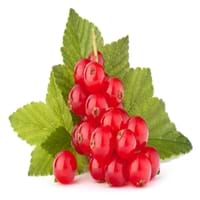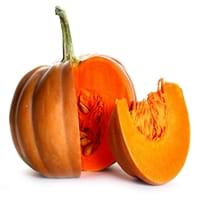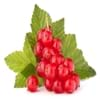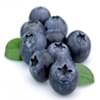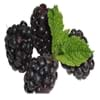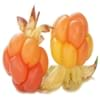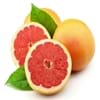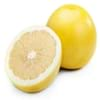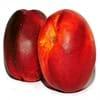Health Benefits
Cancer prevention, Gout treatment, Heart care, Regulation of heart rate, Treatment of rheumatism
Arthritis treatment, Cancer prevention, High Cholesterol Regulation, Lower blood pressure, Helps Prevent cataract, Prevents gall stones, Ulcer treatment, Weight loss properties
General Benefits
Anti oxidant properties, Controls blood pressure, Cures fever, Digestive aid, Healing of wounds, Helps in weight loss, Strengthens bones
Boosts respiratory health, Eliminate parasites and infections, Protects against birth defects, Strengthens bones
Skin Benefits
Brightens and lightens complexion, Reduces wrinkles, Treatment of acne
Heals sunburn, Hydrates skin, Skin rejuvenation
Hair Benefits
Protects hair
Regulates hair growth
Allergy Symptoms
Abnormally rapid heart rate, Anaphylaxis, Breathing difficulty, Hives, Itching, Swallowing difficulties
Abdominal cramps, Anaphylaxis, Digestive Problems, Dizziness, Eczema, Fainting, Hives, Inflammation, Itching, Tingling sensation in wrist and face, Vomiting, Wheezing
Side Effects
Possibly unsafe during pregnancy
Kidney and gallbladder diseases
Best Time to Eat
Best if taken as a breakfast (or empty stomach), As a snack in the late afternoon, Don't eat after meal, Morning time (before lunch)
Along with meal, Don't eat after meal, Morning time (before lunch)
Vitamin B5 (Pantothenic Acid)
Vitamin C (Ascorbic Acid)
Vitamin K (Phyllochinone)
Phytosterol
Not Available
Calories in Fresh Fruit with Peel
Calories in Fresh Fruit without Peel
Not Available
Calories in Frozen Form
Not Available
Not Available
Calories in Dried Form
Not Available
Calories in Canned Form
Not Available
Season
Summer
All seasons
Varieties
Rovada, Stanza, Red Lake, Junifer and Jonkheer van Tets
Jarrahdale, Peanut, Lakota, Cow, Sugar, Caribean, Red kuri, Buttercup and Pink lady
Color
Red
Blue, Green, Orange, Red, White
Inside Color
Red
Creamy Yellow
Taste
Sour, Tart
Creamy, Soft, Sweet
Soil Type
Moist, Well-drained
Clay loam, Sandy loam, Well-drained
Climatic Conditions
Cold
Warm to hot climate
Facts about
- The albino version of red currants known as white currants, are often sold as different fruit.
- Red currant tea is healthy substitute for coffee.
- There are more than 150 varieties of red currants.
- The name pumpkin has its roots in the Greek word ‘pepon’, meaning ‘large melon’.
- The largest pumpkin ever grown weighed 1,140 pounds.
- Pumpkins were once known for removing freckles & curing snake bites.
Top Producer
Russia
China
Other Countries
Belgium, France, Germany, Ireland, Italy, Netherlands, Poland, Portugal, Scotland, Spain, Sweden, United Kingdom
Egypt, India, Indonesia, Iran, Italy, Mexico, Russia, Spain, United States of America
Top Importer
Germany
United States of America
Top Exporter
Russia
China
Botanical Name
Ribes rubrum
Cucurbita maxima
Synonym
Not Available
Cucurbita pepo, Squash
Subkingdom
Tracheobionta
Tracheobionta
Division
Magnoliophyta
Magnoliophyta
Class
Magnoliopsida
Magnoliopsida
Subclass
Rosidae
Dillenhidae
Order
Saxifragales
Cucurbitales
Family
Grossulariaceae
Cucurbitaceae
Species
R. rubrum
Cucurbita mixta
Generic Group
Saxifrage
Not Available
Difference Between Red Currant and Pumpkin
We might think that Red Currant and Pumpkin are similar with respect to nutritional value and health benefits. But the nutrient content of both fruits is different. Red Currant and Pumpkin Facts such as their taste, shape, color, and size are also distinct. The difference between Red Currant and Pumpkin is explained here.
The amount of calories in 100 gm of fresh Red Currant and Pumpkin with peel is 56.00 kcal and 26.00 kcal and the amount of calories without peel is Not Available and 30.00 kcal respectively. Thus, Red Currant and Pumpkin belong to Low Calorie Fruits and High Calorie Fruits category.These fruits might or might not differ with respect to their scientific classification. The order of Red Currant and Pumpkin is Saxifragales and Cucurbitales respectively. Red Currant belongs to Grossulariaceae family and Pumpkin belongs to Cucurbitaceae family. Red Currant belongs to Ribes genus of R. rubrum species and Pumpkin belongs to Cucurbita genus of Cucurbita mixta species. Beings plants, both fruits belong to Plantae Kingdom.
